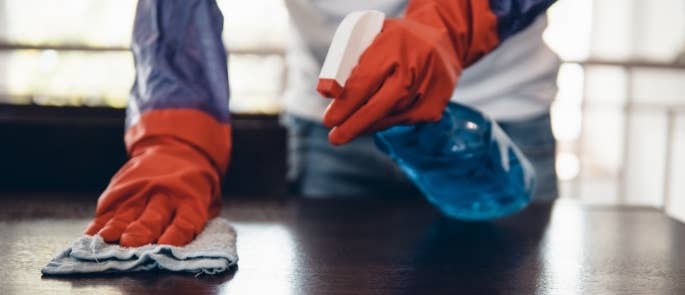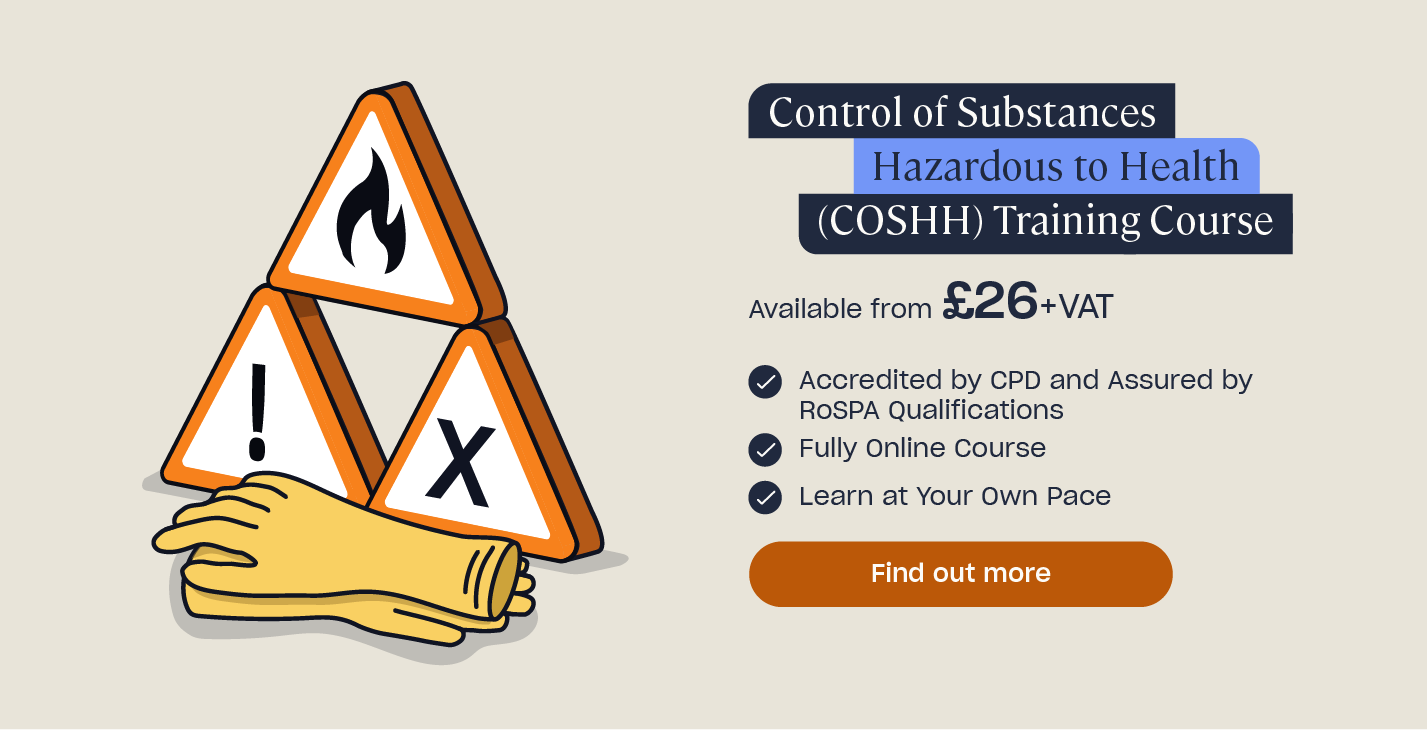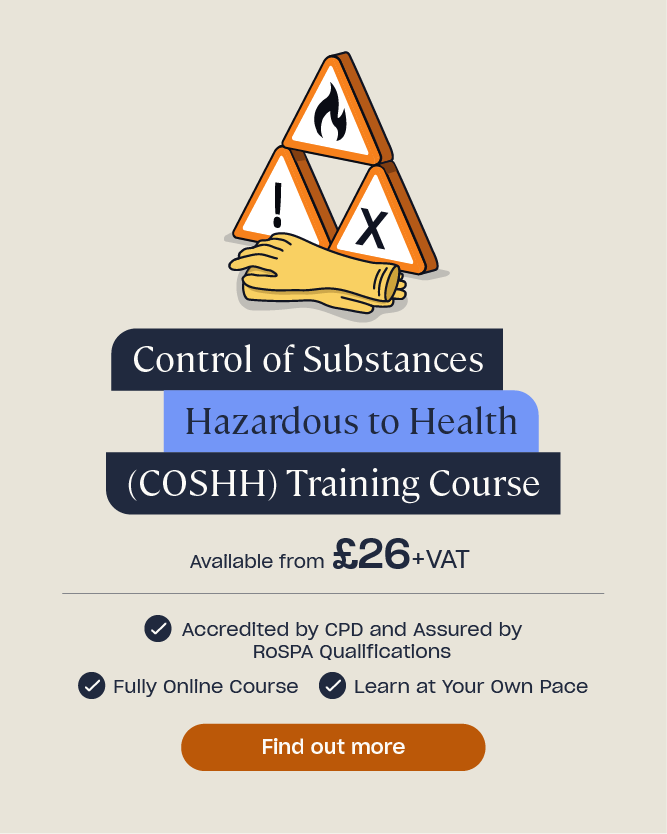What is COSHH Training and Why is it Important for Cleaners?
COSHH (which stands for the Control of Substances Hazardous to Health 2002, as amended) places legal duties on businesses that use hazardous substances. In particular, it requires employers to implement control measures and provide those who use hazardous substances with suitable training, so they can handle them safely.
Correct usage and safe storage are fundamental safety measures that those using chemicals must follow. These help to prevent harm to their and others’ health. For example, occupational asthma or dermatitis are common problems associated with exposure to hazardous substances, but are very preventable with proper planning and procedures.
This article will explain how COSHH training can provide cleaners with the necessary knowledge to effectively manage exposure. It will give a breakdown of what specific topics COSHH training should cover, to ensure cleaners feel confident and safe working with hazardous substances.
Need COSHH Training?
Our COSHH Training for Cleaners provides those who carry out cleaning activities the information they need to understand the risks hazardous substances can pose and how these can be controlled.
Why Do Cleaners Need COSHH Training?
COSHH is vital for protecting workers from hazardous substances. Cleaners are particularly vulnerable, as their job actively involves using chemicals in a way that directly exposes them to the risks. This may be through physical contact with substances or the fumes that chemicals can create. They could also be exposed to biological agents, which are covered by COSHH. For example, if they clean healthcare settings and handle infectious waste.

According to HSE statistics and reports from dermatologists, contact with soaps and cleaning materials and working with wet hands are the main causes of work-related contact dermatitis. Similarly, the HSE reveals that cleaning products are the second highest cause of occupational asthma. Aside from dermatitis and asthma, hazardous substances can also cause allergic reactions, chemical burns, sickness from ingestion, fires, and explosions. These can all occur through mishandling and improper storage.
What’s important to recognise about the health risks posed by hazardous substances, such as occupational asthma, is that they often develop slowly over time. This makes it hard to recognise when safety measures are insufficient, which is why proper surveillance and training are necessary. Hazardous substances can also lead to life-long issues if the harm done is significant.
Given how many serious hazards cleaning activities can pose, COSHH training for cleaners is therefore crucial. It will familiarise them with what their employer should be doing to protect them and the good practices cleaners should adopt to minimise these risks.
What Should COSHH Training for Cleaners Cover?
The COSHH training that cleaners receive should cover:
- Who has legal duties and what everyone’s responsibilities are. Cleaning may be carried out in-house, but many cleaning companies are contracted to clean businesses. It’s important for cleaners to know who is responsible for what, so the right actions are taken.
- Safe handling and usage techniques, including when transporting, decanting, diluting, and directly applying substances, e.g. spraying or wiping a surface.
- The GB CLP chemical labelling system. This ensures that cleaners can identify chemicals correctly and apply the right safety controls.
- Proper storage procedures. This is important for preventing spillages and fumes from leaking. Good storage involves temperature control, ventilation, spill and drip trays, and security e.g. locked storage cabinets.
- The importance of safety data sheets (SDSs). These contain vital information about hazardous substances and must accompany them. Cleaners should be able to refer to SDS if they need further guidance about safe usage.
- Workplace Exposure Limits (WELs). Exposure to hazardous substances must be controlled to a safe amount, which is why WELs are so crucial. They help to determine the safe concentration of a substance that can be present in the air and the maximum duration of exposure to it.
- Personal protective equipment (PPE). PPE will be necessary in many cases. At the very least, protective gloves are important to wear when using cleaning chemicals to prevent skin irritation. In certain circumstances, however, cleaners will need more robust equipment. For example, respirators, eye protection, and aprons.
- Waste procedures. Safely handling used, disposable materials and empty containers is essential, as it prevents fires and infection risks.
- Health surveillance. Cleaners should be part of a health surveillance system if they are at risk of exposure to hazardous substances. As COSHH-related hazards usually affect a person over a prolonged period of time, ongoing surveillance is vital for spotting early signs.

Training is also vital for workplace-specific procedures, such as the use of storage facilities and any new products introduced. A combination of internal and external training will help cleaners keep their COSHH knowledge refreshed and up to date, which in turn enables them to remain safe when working with hazardous substances.
What to Read Next:
- Online COSHH Training Course
- Online COSHH for Clinical Environments Training Course
- Online COSHH Training for Cleaners
- What is a COSHH Assessment & Does My Workplace Need One?
- The History and Importance of COSHH
- What Methods Can Be Used for the Disposal of Infectious Waste?
- COSHH Quiz
- COSHH Storage Requirements
- The COSHH Hazard Symbols & Their Meanings
- Risk Assessment for Cleaning: Free Template
- COSHH – A Guide to Employers’ and Employees’ Responsibilities







